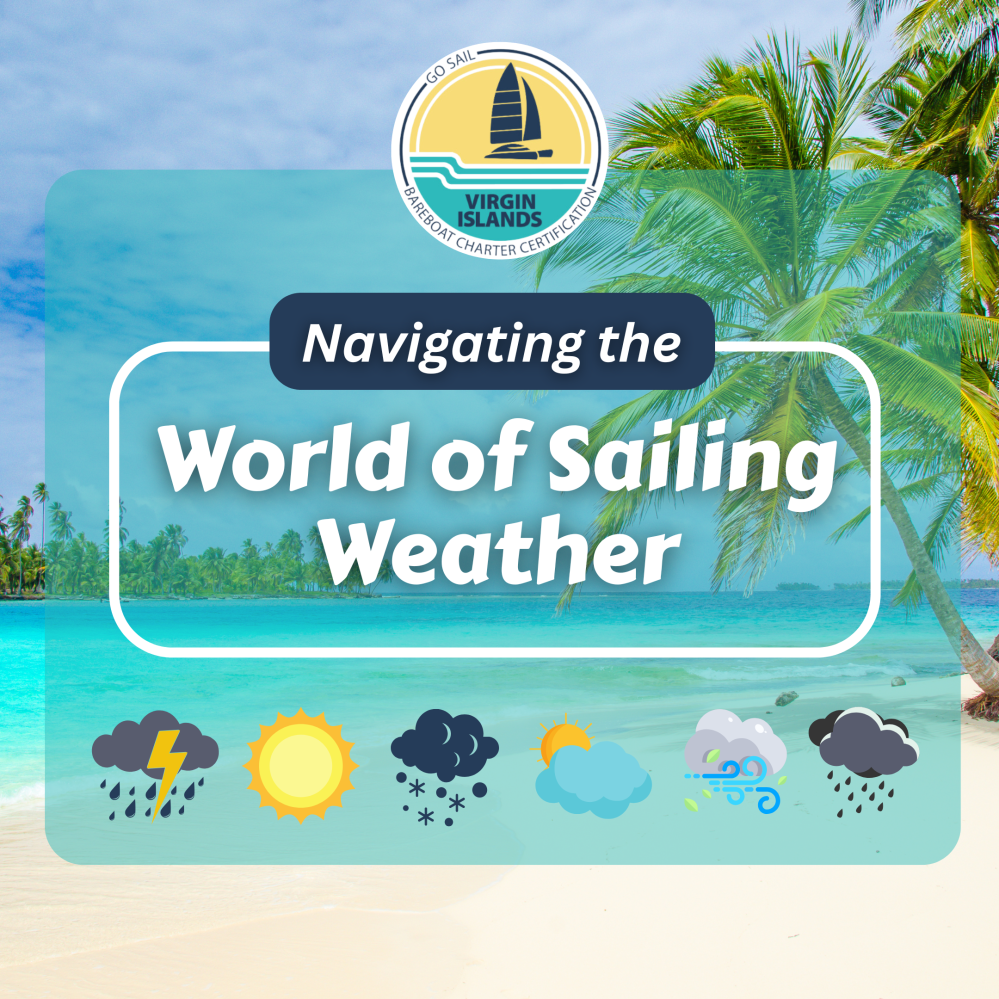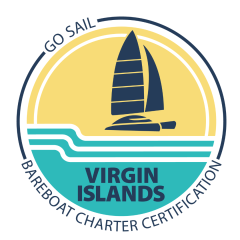Navigating the World of Sailing Weather
 The Virgin Islands are often described as having “champagne sailing” due to the normally calm conditions and the picturesque Caribbean Sea. For most of the year, the BVI and USVI are an excellent place to learn how to sail, with gentle breezes and small swells.
The Virgin Islands are often described as having “champagne sailing” due to the normally calm conditions and the picturesque Caribbean Sea. For most of the year, the BVI and USVI are an excellent place to learn how to sail, with gentle breezes and small swells.
But as with much of the Caribbean, it’s important to pay attention to numerous factors in order to sail safely. We’ll tell you all you need to know about navigating the world of sailing weather.
Know Weather Trends
Choosing the safest time to sail in the Virgin Islands is easier when you know a bit more about weather trends. Here’s a look at the different sailing seasons in the Virgin Islands.
Peak Season
December through April is generally the safest time to sail in the BVI and USVI. The winds typically settle in between 5 – 15 knots, and these are the driest months of the year.
Shoulder Season
May and November are shoulder seasons, which are located just before and after hurricane season. You may get ideal weather for sailing, but there is some risk of rain, warmer temperatures, and stronger winds at this time.
Hurricane Season
From August to October, the Virgin Islands are in the middle of hurricane season. It’s especially important to pay attention to the weather, tides, and wind during this time. We never sail when hurricanes are predicted in the forecast, but you may deal with rain and windy conditions, nonetheless.
Use Sailing Weather Tools
One of the first things you should do before setting sail is check the Virgin Islands’ sailing weather conditions. Most of the time, you can expect ideal sailing conditions from December to May, but even then, an occasional storm may roll through.
Use traditional tools and mobile apps to sail more safely in the Virgin Islands.
Learn the Basics of Sailing
Knowing how to predict the weather is a valuable tool that can save you lots of headaches on the open water. When you take sailing courses with Go Sail VI, we teach you the basics of understanding weather patterns so you can learn to sail in various conditions on future trips!
Understanding the Weather On Land and Sea
Predicting the weather is important for any vacation, but there are more factors to consider when you are sailing the Caribbean. In addition to paying attention to temperature and rain, there are other factors you should be aware of.
Some additional weather to consider when sailing safety includes:
- Wind: Not only is wind speed important, but you will want to know its direction and any predicted gusts. Wind can also change direction during your sailing trip, so it’s always important to pay attention to it during your sailing adventure.
- Fog: While not as foggy as other popular sailing locations, the Virgin Islands do experience some fog, especially during shoulder season. This can reduce visibility, so it’s a good idea to track any predicted moisture before sailing.
- Currents: Always keep an eye on currents on your sailing trip. You may need to adjust your speed or take a different route if they are too strong.
Navigating the USVI and BVI Weather
The weather in the USVI and BVI is similar, but there are a few things to remember. If you are wondering if US Virgin Islands destinations like St. Thomas or British Virgin Islands locations like Virgin Gorda have safe sailing weather, understand that they are generally the same. However, you can experience more rain when sailing in the USVI. Pack accordingly during the rainy season!
